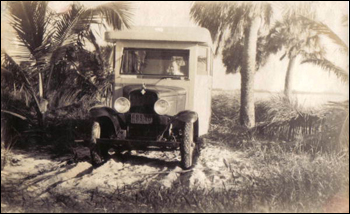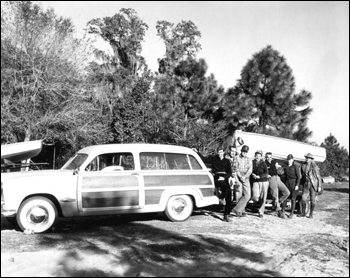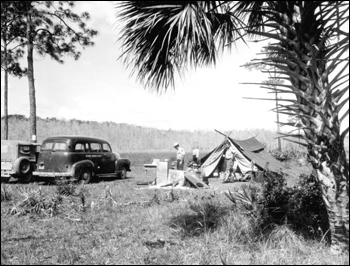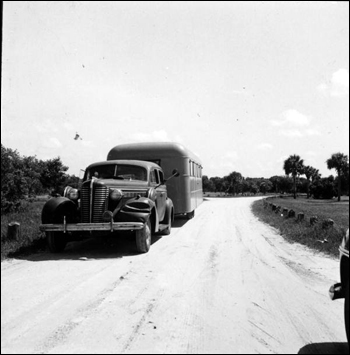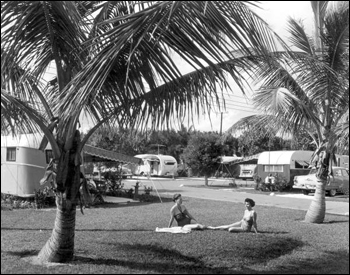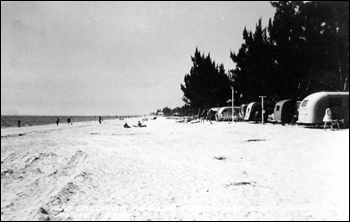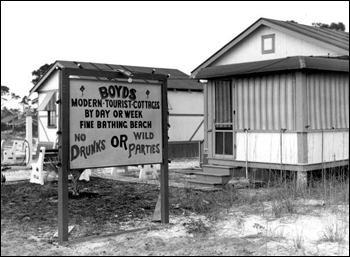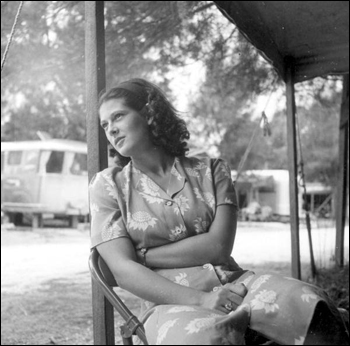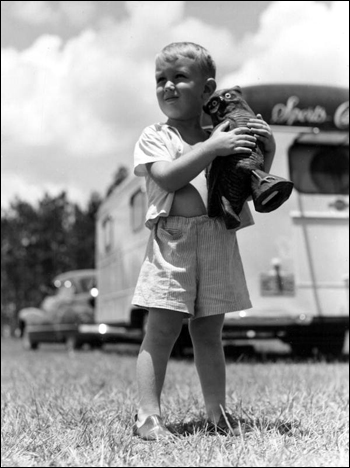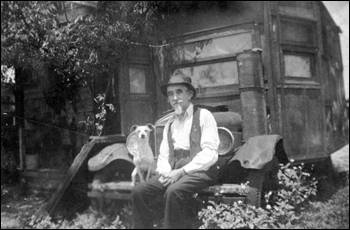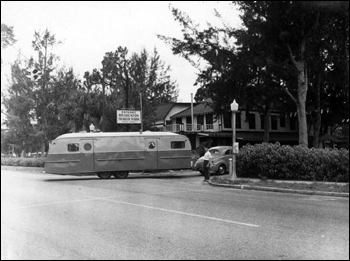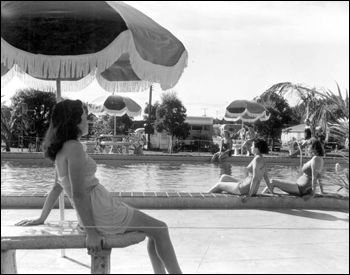Photo Exhibits
Photo exhibits spotlight various topics in Florida history, and are accompanied by brief text intended to place selected materials in historical context.
Tin Can Tourism
Highways in the Sun
The opening of highways to the southern states during the second decade of the twentieth century allowed newly mobile northerners and adventurous men and women from around the nation to see the unique sites and communities of Florida's interior, away from the more developed cities and destinations on the east and west coasts.
In 1915, the Dixie Highway Association and interested state officials began planning a network of paved roads that would eventually stretch from Miami to the northern border of the United States. A number of other auto trails, including the Atlantic Highway, Lone Star Trail, and Mississippi River Scenic Highway, also terminated in Florida. The number of automobile tourists visiting the state increased dramatically every year, and Florida's rural areas and small towns began to change as well.
William Frost Layton in recreational vehicle on tract of land he later developed into Layton's Cottage, Trailer, and Fishing Park: Riviera Beach, Florida (ca. 1940)
Image number: PR30428
Men and their trailer (December 5, 1949)
Image number: C012543
Accompanying note: "Morris Monts de Oca, Charlie Anderson, Bill Buford, Freddie Crews, Wyatt Blassingame, Von Walker, & Wilton Sauls. After 6 days and nights on the beautiful Suwannee River these men are headed home. They traveled the river from Okefenokee Swamp to the Gulf of Mexico."
Campers in Corkscrew Swamp: Collier County, Florida (19--)
Image number: C027949
View of trailer parked near entrance to the Myakka River State Park: Sarasota, Florida (1947)
Image number: C011695a
Myakka River State Park was opened in 1942.
Unidentified women sunbath at the Hollywood Beach Trailer Park : Hollywood, Florida (1953)
Image number: C017603
Red Coconut Trailer Park (1949)
Image number: PR03347b
Boyds Modern Tourist Cottages: Pensacola, Florida (1941)
Image number: RC02739
Photo by: Marion Post Wolcott
Original image caption: "Sign advertising tourist cottages on highway outside Pensacola, Florida." The image was created by the New Deal program, Farm Security Administration (originally the Resettlement Administration) in order to demonstrate the hardships of farm workers during the Great Depression.
Roey Stickles sits out on the porch in the trailer park: Sarasota, Florida (1946)
Image number: C002889
Michael Sadler holding a sculpture stands outside a trailer: Dead Lakes, Florida (1947)
Image number: C006771
From early automobiles, modified to carry sleeping quarters, kitchen equipment, and barrels of water, to the sophisticated campers as luxurious as nice homes, Florida’s vacationer-explorers used their beloved vehicles to find out-of-way locations of interest and comfortable places to live for a few days or weeks. The original tin can tourists of the 1920s pioneered camper travel, and the practice became ever more popular among the booming families after World War II and increasingly-mobile retirees journeying south.
Trailer parks developed to cater to the waves of new visitors bringing their accommodations with them. Roadside attractions and amusement parks likewise developed facilities to meet the needs of the expanding variety of campers and trailers. Snowbirds, young families, and mobile workers all found Florida welcoming, and more permanent trailer parks appeared recreating the familiarity of village life, only with movable structures comprising its residents’ homes.
Retired railroad man sitting on the bumper of his house-car (1931)
Image number: PR02800
Retired railroad man from Ohio at the Long Branch Trailer Park.
Trailer enters the Bradenton Trailer Park: Bradenton, Florida (1949)
Image number: C011444
Residents by the pool: Miami, Florida (1953)
Image number: C017592

 Listen: The Gospel Program
Listen: The Gospel Program